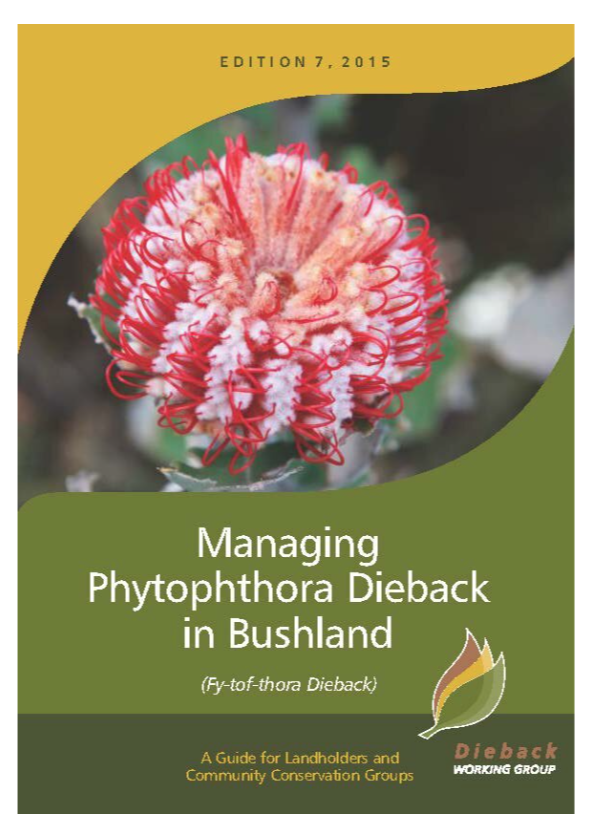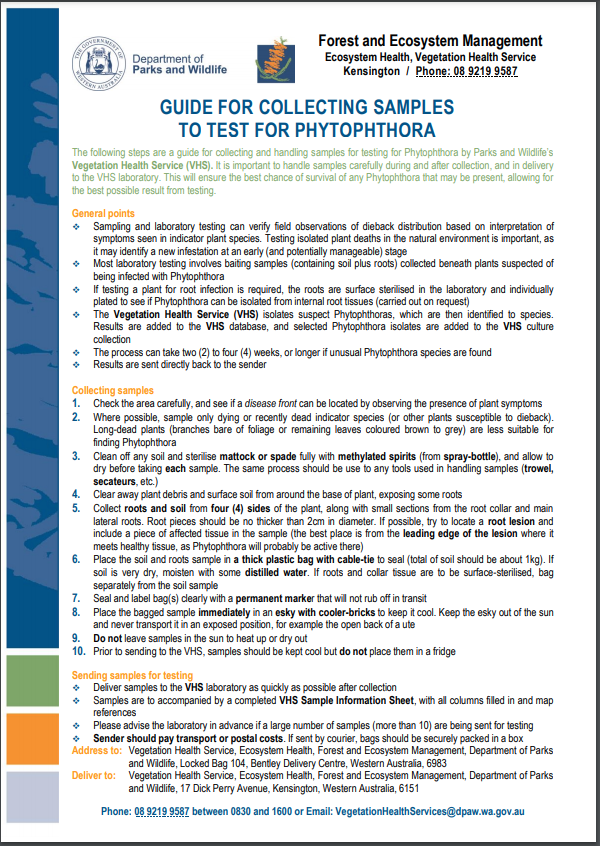

Disease
Dieback
Crop Diseases
Livestock Diseases
Dieback
Phytophthora dieback is caused by the plant pathogen, Phytophthora cinnamomi, which kills susceptible plants, such as banksias, jarrah and grass trees, by attacking their root systems.
Dieback is a symptom of a Phytophthora infection and affects more than 40 per cent of the native plant species and half of the endangered ones in the south-west of Western Australia. The plants die because they cannot take up the water and nutrients they need.
Phytophthora also impacts a range of horticultural species such as cinnamon, roses, azaleas and fruit trees.
Since there is no known cure, once the disease has been introduced into a garden it cannot be easily eradicated and is a major problem.
Prevention of the spread of dieback through good hygiene practices is the easiest management strategy.
On your property you can help prevent the introduction and spread of dieback by ensuring all contractors enter and leave your property with
clean and dirt-free equipment. Visit https://dieback.net.au/ to find out more about Phytophthora and see the online mapping resources.
YouTube Videos on Managing Dieback
The State Dieback Framework - Solutions to manage disease incursions and invasive species
City of Joondalup pathogen management
Phosphite tolerance in isolates of Phytophthora cinnamomi recovered from avocado orchards
Crop Disease
Plant diseases are a significant threat to the yield and profitability of a farm. In the South Coast region, a large number of farms are broadacre cropping farms and are at serious threat of plant pathogens.
“Plant pathogens can be fungal, bacterial, viral or nematodes and can damage plant parts above or below the ground. Identifying symptoms and knowing when and how to effectively control diseases is an ongoing challenge for WA growers of cereals.” - DPIRD, Crop Diseases.
To keep up to date on pest and disease forecasts in the region, sign up to the PestFax mailing list and jump on board with the PestFax Map and Reporter chart. “PestFax is an interactive service covering diseases and pests threatening crops and pastures throughout the grain belt of Western Australia.” You can find all the information on PestFax here.
The Department of Primary Industries and Regional Development also release PestFax video’s on YouTube, like their PestFax pre-season forecast.
Livestock Disease
Much like plants, pest and disease management is critical for the health and wellbeing of your livestock. With livestock producers all across the South Coast, holistic disease management and good practise is essential in protecting the region.
Meat and Livestock Australia (MLA) have plenty of information on livestock diseases, including a comprehensive list of diseases affecting cattle, sheep and goats, and all others. Read more of their information here.
The Department of Primary Industries and Regional Development also release an annual WA Livestock Disease Outlook, which can be found here.









